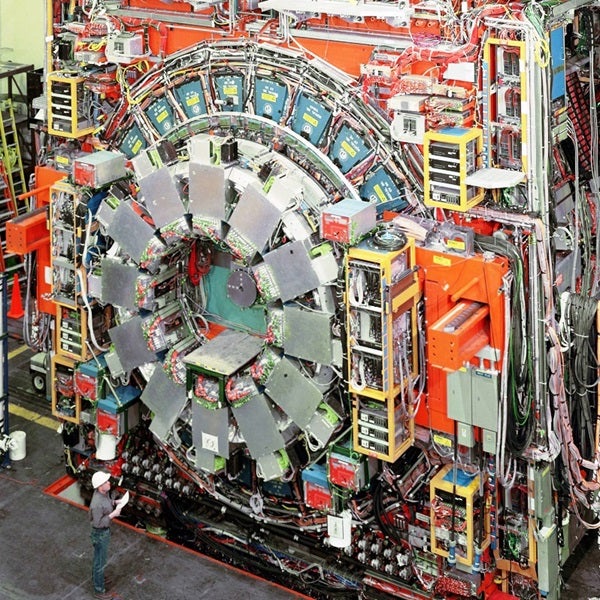An international team of researchers, including several members from the United Kingdom and the U.S. Department of Energy’s Fermilab, has announced results that indicate that the quest to discover the elusive Higgs boson particle has taken a giant leap forward, drawing closer to answering questions about the makeup of the universe.
These latest results, which were scientists obtained at Fermilab’s DZero and CDF projects, significantly narrow down the possible mass range of the Higgs boson particle, ruling out a quarter of the mass range that had previously been thought possible. To obtain the latest Higgs search result, CDF and Dzero’s analysts separately sifted through more than 500,000 billion proton-antiproton collisions that each experiment has studied since 2001. After the two groups obtained their independent Higgs search results, they combined the
data to produce the joint exclusion limits of the Higgs particle’s mass.
“Our latest result is based on about twice as much data as a year and a half ago,” said Stefan Soeldner-Rembold from the University of Manchester, England. “As we continue to collect and analyze data, the experiments will either exclude the standard model Higgs boson in the entire allowed mass range or we’ll go on to see first hints of its existence. There is less and less room for the Higgs boson to hide now.”
“There are important pieces missing in our understanding of the basic building blocks of the universe, and these results are an important step in learning how our universe works and why it exists,” said John Womersley from the Science and Technology Facility Council (STFC) in the United Kingdom.
In addition to the announcement of these results, this year’s International Conference on High Enery Physics (ICHEP) in Paris is the first conference where physics results obtained at the Large Hadron Collider (LHC) have been presented. Rolf Heuer from the European Organization for Nuclear Research (CERN) presented measurements from the first 3 months of successful LHC operation, at an energy 3.5 times higher than has previously been achieved at a particle accelerator.
The Higgs boson particle was originally proposed by Peter Higgs, a British theoretical physicist, as a solution to one of the most basic puzzles in particle physics — why some particles possess mass and others do not. Since then, scientists could only speculate about the existence of the Higgs particle, but thanks to current research and experiments being carried out at the LHC at CERN in Switzerland and the Tevatron Collider at Fermilab in the U.S., a glimpse of the Higgs boson particle could soon be a closer reality.










